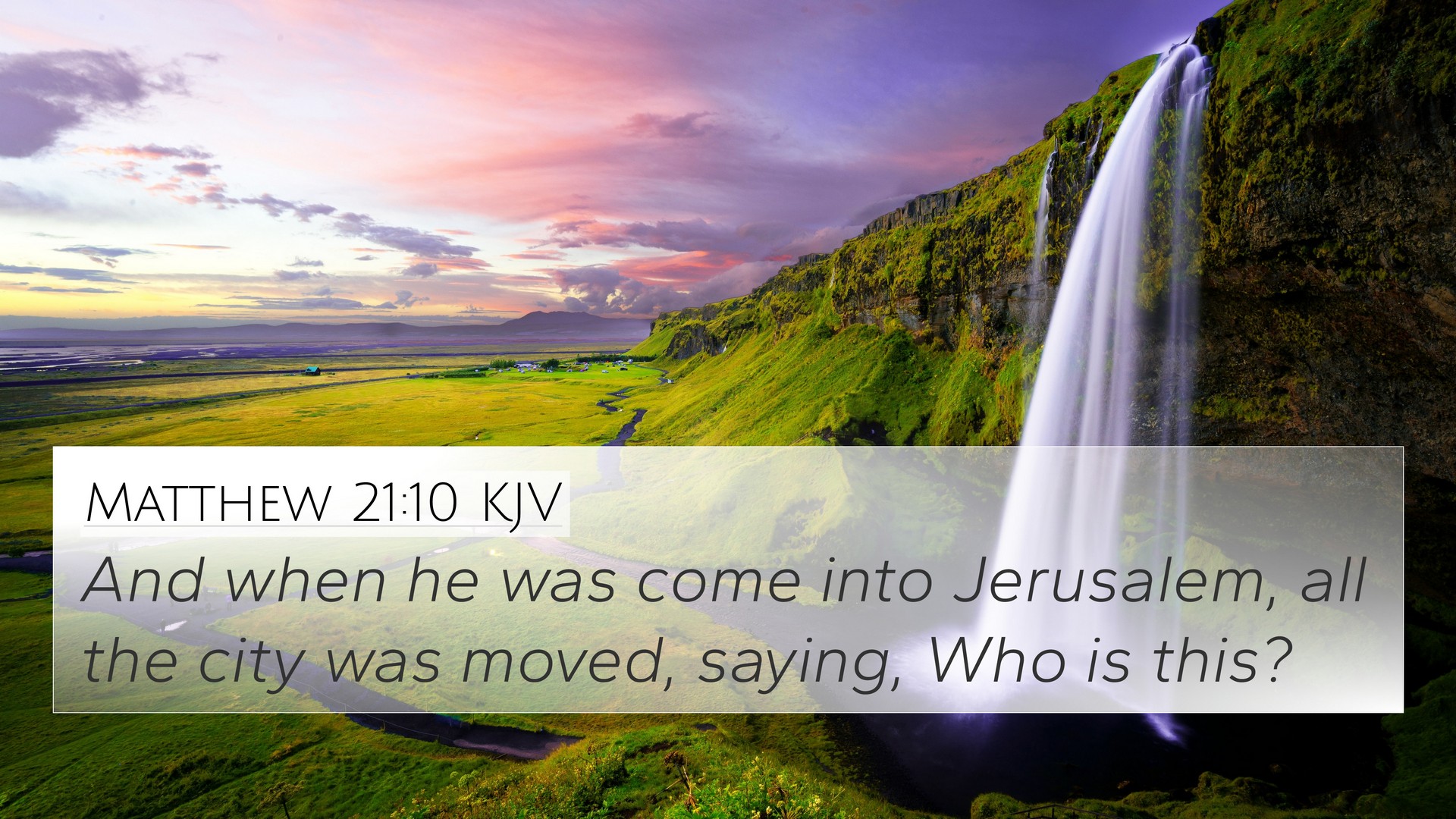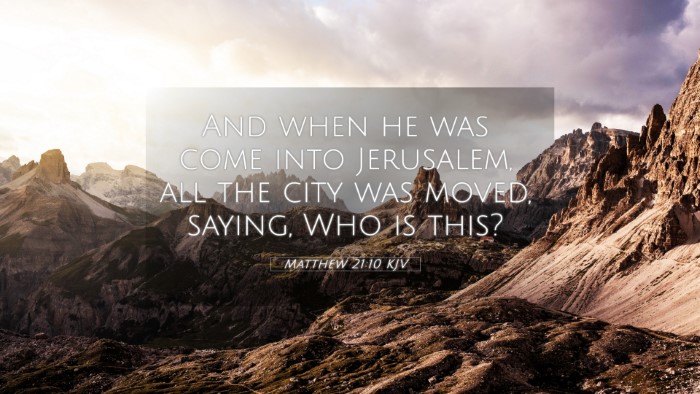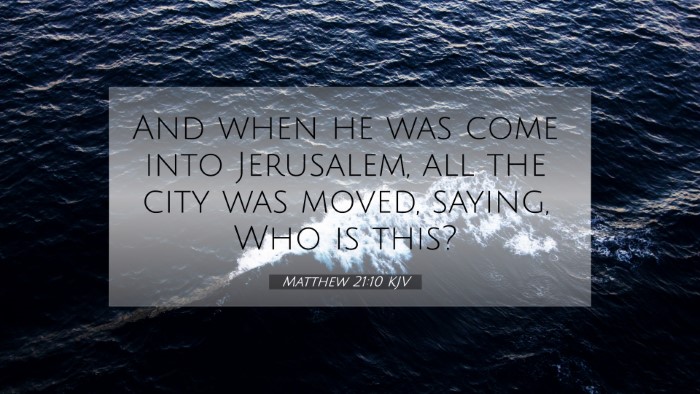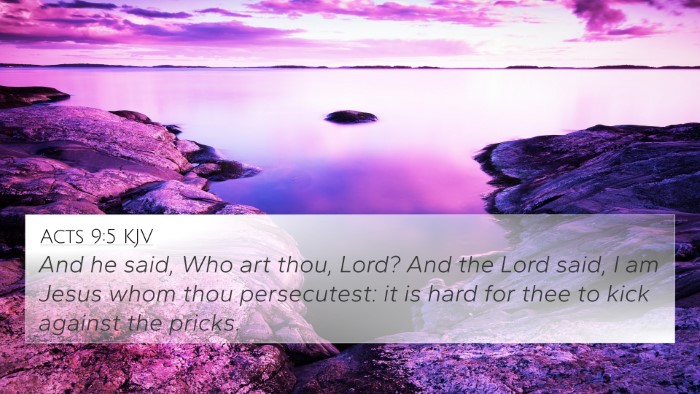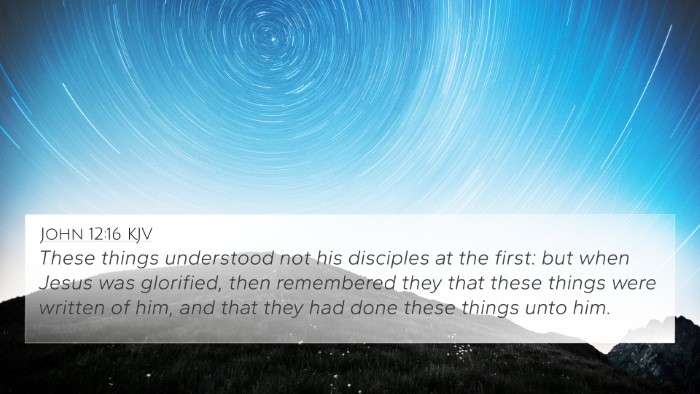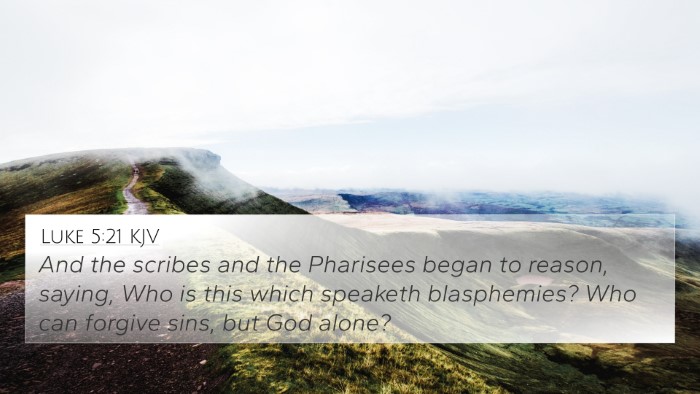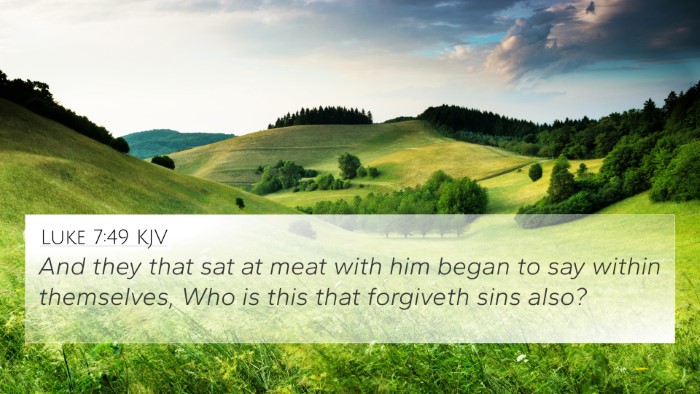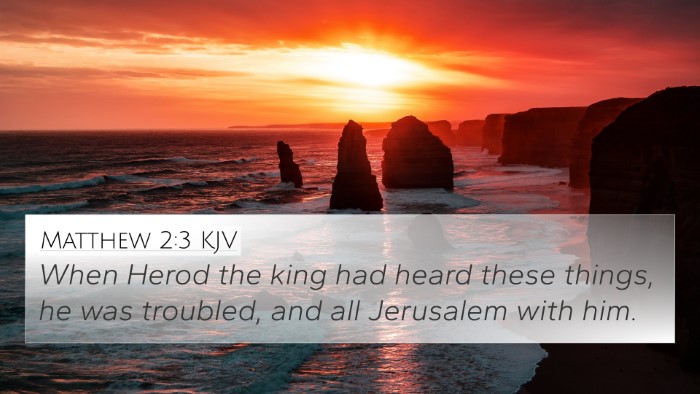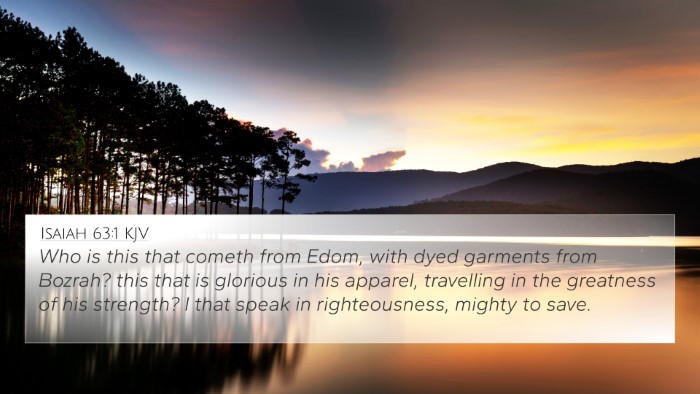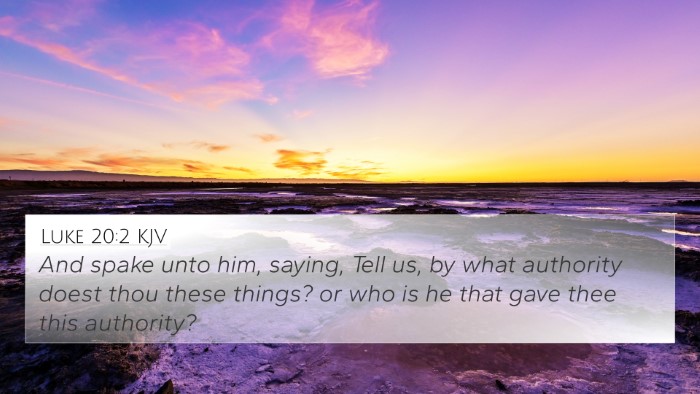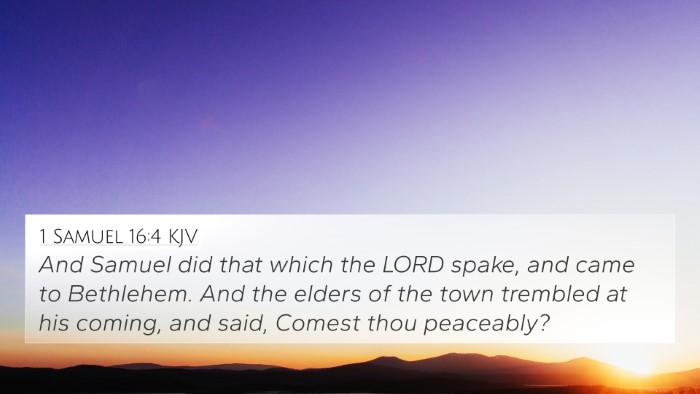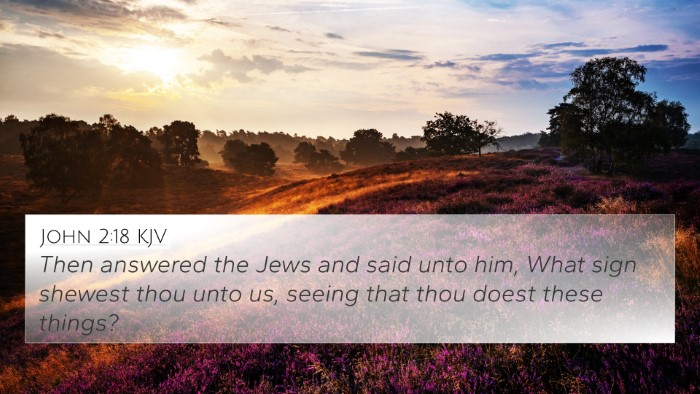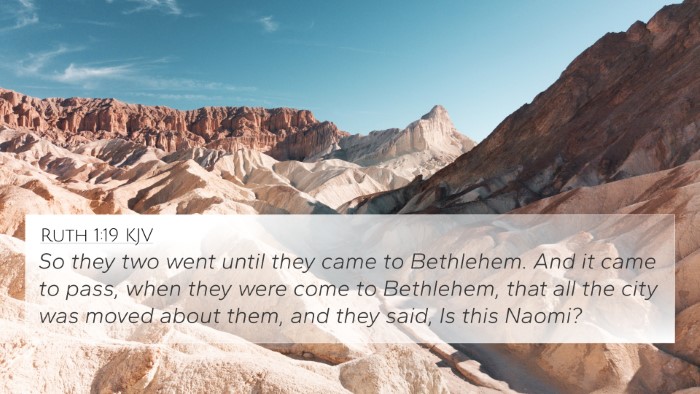Understanding Matthew 21:10
Matthew 21:10 states, "And when He had come into Jerusalem, all the city was moved, saying, 'Who is this?'" This verse holds significant meaning within the context of Jesus’ triumphant entry into Jerusalem, marking a pivotal moment in His ministry.
Context and Background
To fully grasp the weight of this verse, it is essential to examine the context in which it appears. This event occurs after the raising of Lazarus and is part of the final journeys leading up to the crucifixion. The reaction of the Jerusalem crowd reveals a mix of curiosity and wonder, reflecting the varied understanding of Jesus' true identity among the people.
Commentary Insights
-
Matthew Henry:
Henry emphasizes the reaction of the city as significant, illustrating the impact of Jesus’ presence. He notes the bewilderment of the people indicates a blend of excitement and uncertainty about who Jesus was, serving as an introduction to His role as the Messiah.
-
Albert Barnes:
Barnes elaborates on the historical context, suggesting that this public entry had deep socio-political implications. The phrase "all the city was moved" encapsulates the profound effect Jesus had on the populace, raising questions about His authority and mission.
-
Adam Clarke:
Clarke points out that the people's inquiries highlight their lack of full recognition of Jesus as the Messiah. He stresses that their exclamation reflects both awe and confusion, which was common in the interactions of Jesus with the public throughout the gospels.
Bible Verse Cross-References
This verse can be connected to several other passages in the Bible, which help elucidate its meaning:
- John 12:12-13: The account of Jesus' entry into Jerusalem is described, where He is greeted with palm branches, showing the fulfillment of prophecy.
- Zechariah 9:9: This Old Testament prophecy foretells the coming of the king, emphasizing humility and righteousness—traits associated with Jesus.
- Luke 19:38: Similar to Matthew, this account highlights the crowd's acclamation, again reflecting their expectations of the Messiah.
- Matthew 21:9: Prior to verse 10, this verse notes the crowd shouting "Hosanna," a key phrase connected to recognition of Jesus as the Messianic figure.
- Mark 11:10: This verse indicates the acclaim of Jesus as coming "in the name of the Lord," reiterating His authority and divine mission.
- Isaiah 62:11: Prophetic context where salvation is proclaimed, linking the anticipation of the arrival of the anointed one.
- Matthew 16:13-16: Peter’s confession where Jesus’ identity as the Messiah is revealed, providing essential background for the crowd's confusion in Matthew 21:10.
Thematic Bible Verse Connections
Exploring the connections between these verses reveals key themes:
- The Theme of Recognition: Many verses highlight the journey toward understanding Jesus’ true identity.
- Divine Fulfillment: The gospels frequently point to Old Testament prophecies being fulfilled in Jesus, enhancing the significance of Matthew 21.
- Public Perception of Jesus: Reactions of the crowds provide a lens through which we can view the complexities of faith and doubt.
Tools for Bible Cross-Referencing
Utilizing tools for Bible cross-referencing can enhance understanding. Resources such as Bible concordances, cross-reference guides, and comprehensive cross-reference materials are crucial for in-depth Biblical study.
How to Use Bible Cross-References
Understanding how to find cross-references in the Bible involves searching specific keywords or themes within passages, allowing for a thorough analysis of interconnected scriptures.
Conclusion
Matthew 21:10 is not just a historical account; it is a reminder of the vibrant dialogue within scriptures that highlights identity, fulfillment, and public perception. Engaging deeply with this verse allows believers to appreciate the complexities of faith as expressed throughout both the Old and New Testaments.
